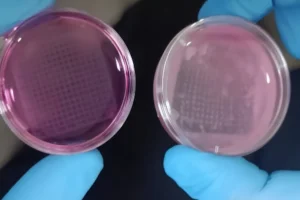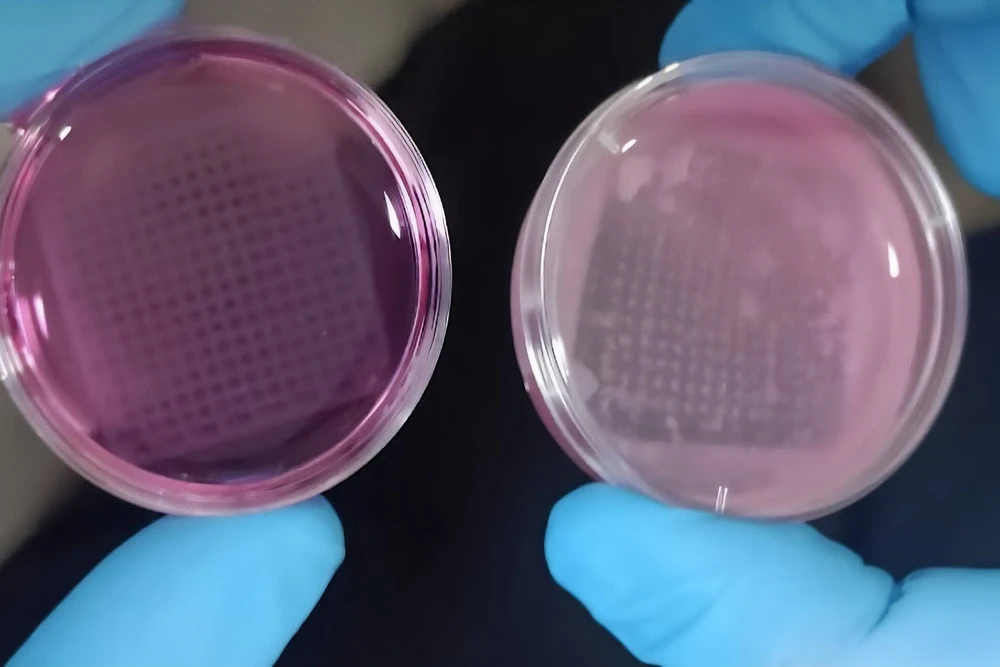Recent years have seen rapid developments in 3D bioprinting technology, which are opening up new opportunities in the field of tissue engineering. One of the most promising is the development of artificial skin, which can replace traditional methods of testing cosmetics on animals.
 Imitation skin from a 3D printer, Photo by Manisha Sonthalia – Vellore Institute of Technology
Imitation skin from a 3D printer, Photo by Manisha Sonthalia – Vellore Institute of Technology
EU regulations on animal testing
The European Union has banned the testing of cosmetics on animals, prompting scientists to seek alternative methods of assessing product safety. Nevertheless, in some cases, such as chemicals with potential health risks, animal testing is still required. Consequently, the development of in vitro-engineered substitutes, such as artificial skin, is crucial to the future of safe and ethical testing.
The process of creating scaffolds for cells
One of the big challenges in tissue engineering is creating three-dimensional structures, called scaffolds. They must be biocompatible, mechanically stable and promote cell proliferation. Hydrogels based on cellulose nanofibers (CNFs) and alginate are often used for this purpose. Studies have shown that this combination enables 3D printing of structures that promote cartilage cell growth, which shows promise for tissue regeneration.
A novel approach for creating artificial skin
Researchers at the Graz University of Technology and the Vellore Institute of Technology have developed an innovative method for creating artificial skin. They used a combination of cellulose nanofibers, carboxymethylcellulose and citric acid to create a hydrogel scaffold using 3D printing. The process involves freeze-drying and neutralization, resulting in a stable structure that supports skin cell growth. Initial tests have shown that skin cells survive in this environment for several weeks, confirming the potential of this method as an alternative to animal testing.
The development of 3D bioprinting technology and the creation of artificial skin opens new perspectives in cosmetic and medical research, reducing the need for animal experiments.
Sources: Rynek Wewnętrzny i Przemysł, PMC






